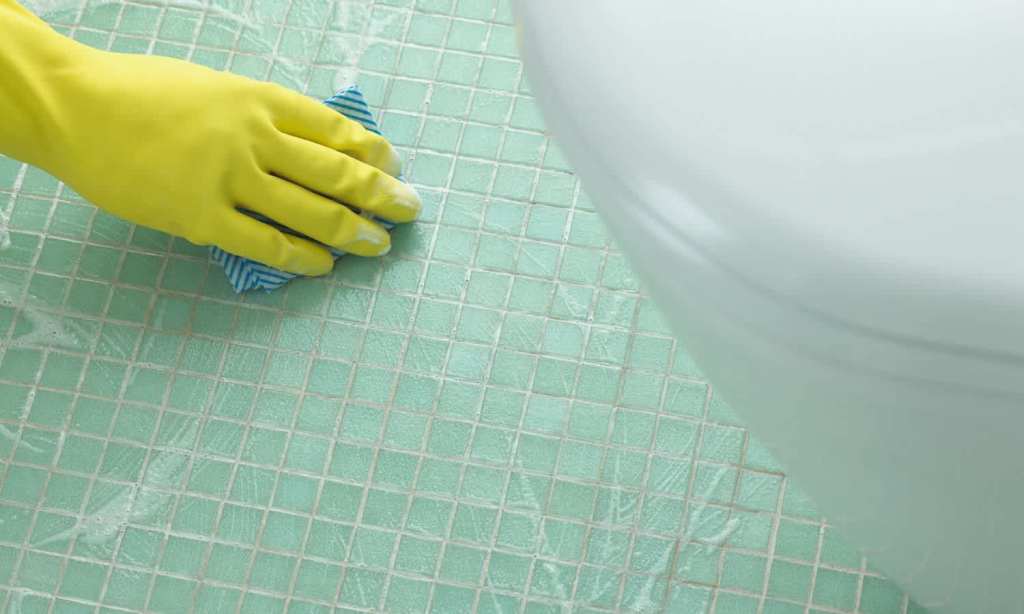Cleaning your bathroom has never been more important than it is now.
As we learn more about how coronavirus spreads, it’s integral that you continue to uphold high hygiene practices in order to minimise the spread of germs and bacteria.
The bathroom is obviously a place where germs thrive, thanks to the moist conditions and the bacteria haven that is the toilet.
To maintain bathroom hygiene, we’ve curated a few expert-backed ways you can minimise the risk of infection via the bathroom.
Keep your toilet lid closed
While there haven’t been any recorded instances of COVID-19 transmission via sharing a toilet, traces of the virus have been discovered in faeces.
Last week, the Federal Government announced that sewage systems would be monitored for the presence of COVID-19, as apart of its response plan, the ABC reported.
According to The Conversation, the virus was found to linger for longer in stools compared to your throat. A study of 74 COVID-19 patients in China found that their stool samples tested positive for the virus for 11 days after their throat swabs tested negative.
So, when it comes to using the toilet, you want to be as hygienic as possible and keeping the toilet lid down at all times is one way to do this. It’s especially important to close the lid when flushing.
When you flush a toilet, it creates a phenomenon called toilet plume, according to The Conversation. This releases up to 145,000 aerosolised droplets and these can be suspended in the air for hours after just one flush.
Research suggests that “infectious viral gastroenteritis caused by norovirus can be transmitted in aerosol form through toilet plumes.” COVID-19 could also be transmitted the same way, but more research is needed on the subject.
In this case, it’s better to be safe and simply closing the lid when flushing the toilet can prevent up to 80% of infectious droplets from entering the air.
It’s especially important to close the toilet seat before flushing a public toilet, as it would contain the bacteria of many, many individuals.
Keep your toothbrush as far as away as possible
As noted above, flushing a toilet can cause bacteria to escape into the air and linger for several hours, so one place it could land is your toothbrush.
Some experts believe that this bacteria can jump as far as six feet from the bowl after flushing, so try to keep your toothbrush as far away from the toilet as possible. Brushing with faeces droplets is not ideal.
To prevent further bacteria forming, keep your toothbrush as dry as possible between uses. The American Dental Association (ADA) recommends exposing the brush to as much sunlight as possible and avoid storing toothbrushes in a closed cupboard.
“A moist environment such as a closed container is more conducive to the growth of microorganisms than the open air,” the ADA states.
Clean your toilet brush
You might not have ever done this (and don’t feel bad if you haven’t!) but it makes sense that a toilet brush could also be contaminating your toilet as it might not have been cleaned before.
Experts recommend spraying the toilet brush with a disinfectant or bleach spray to kill lingering germs. Otherwise, you can prepare a cleaning solution in a bucket and submerge the brush for an hour to really give it a thorough clean.
Replace your towels frequently
Towels are the perfect breeding ground for bacteria because they’re often damp, stored in moist bathrooms and used several times a day.
To prevent using a bacteria-filled towel, change your bathroom towels every two days — especially the hand towel that is used by the whole family.
“After about two days, if you dry your face on a hand towel, you’re probably getting more E. coli on your face than if you stuck your head in a toilet and flushed it,” Charles Gerba, a microbiologist at the University of Arizona, told TIME.
As we’re still learning about the length of time coronavirus can survive on surfaces, experts recommend washing outside clothes and high-touch items like towels in the hottest water possible.
The biggest culprit in creating an unsanitary towel is dampness.
“I worry about towels that remain damp or moist,” Susan Whittier, director of clinical microbiology at New York-Presbyterian and Columbia University Medical Centre, told TIME.
“That’s a breeding ground for MRSA,” an infection caused by drug-resistant Staphylococcus aureus a.k.a golden staph.
While scientists are still unsure whether the virus can be transmitted via items like hand towels, other bacteria can be.
Clean high-touch surfaces twice-daily
This seems like a no-brainer, but people often forget about their bathroom and shower taps and toilet flush buttons when cleaning. Make sure to pay close attention to these and give them a clean twice a day.
It might seem excessive but think about how many times those places are touched within the space of just one day!
The Australian Department of Health advises the use of a disinfectant that claims “antiviral activity”, meaning it can kill a virus (such as chlorine-based disinfectants).
Otherwise, use a disinfecting wipe as simply cleaning it with a cloth could just be moving the germs back and forth over the sink.
The current health crisis is evolving rapidly. If you suspect you or a family member has coronavirus you should call (not visit) your GP or ring the national Coronavirus Health Information Hotline on 1800 020 080.







